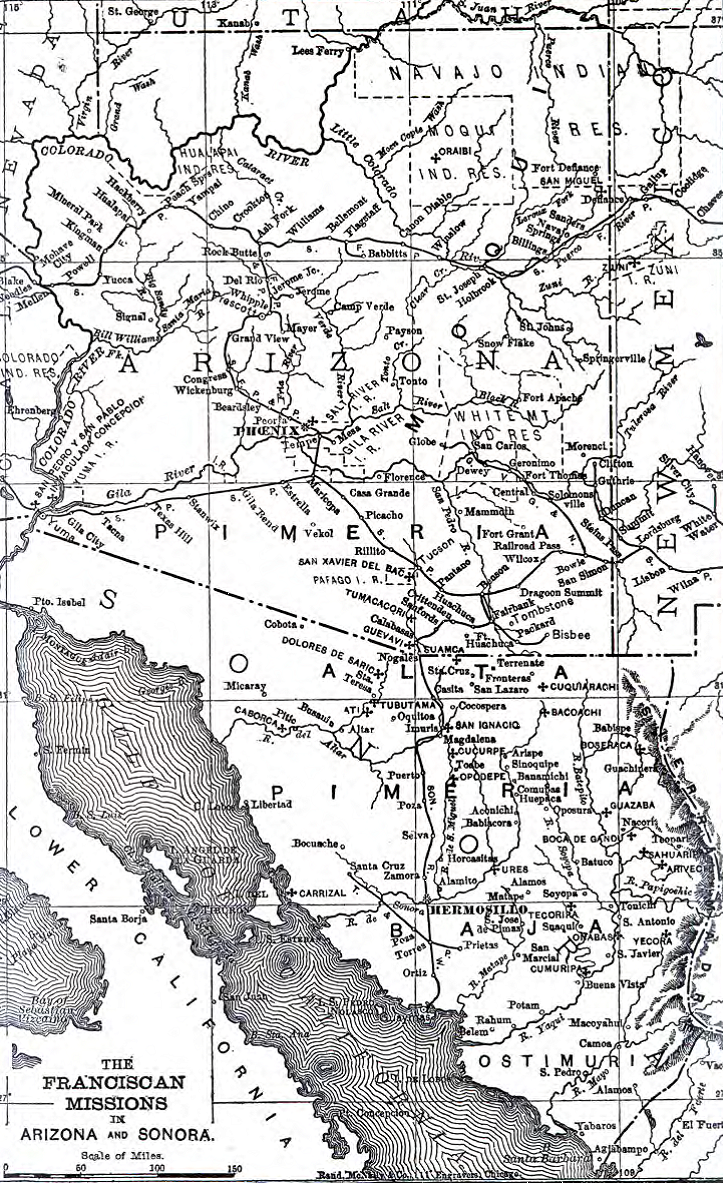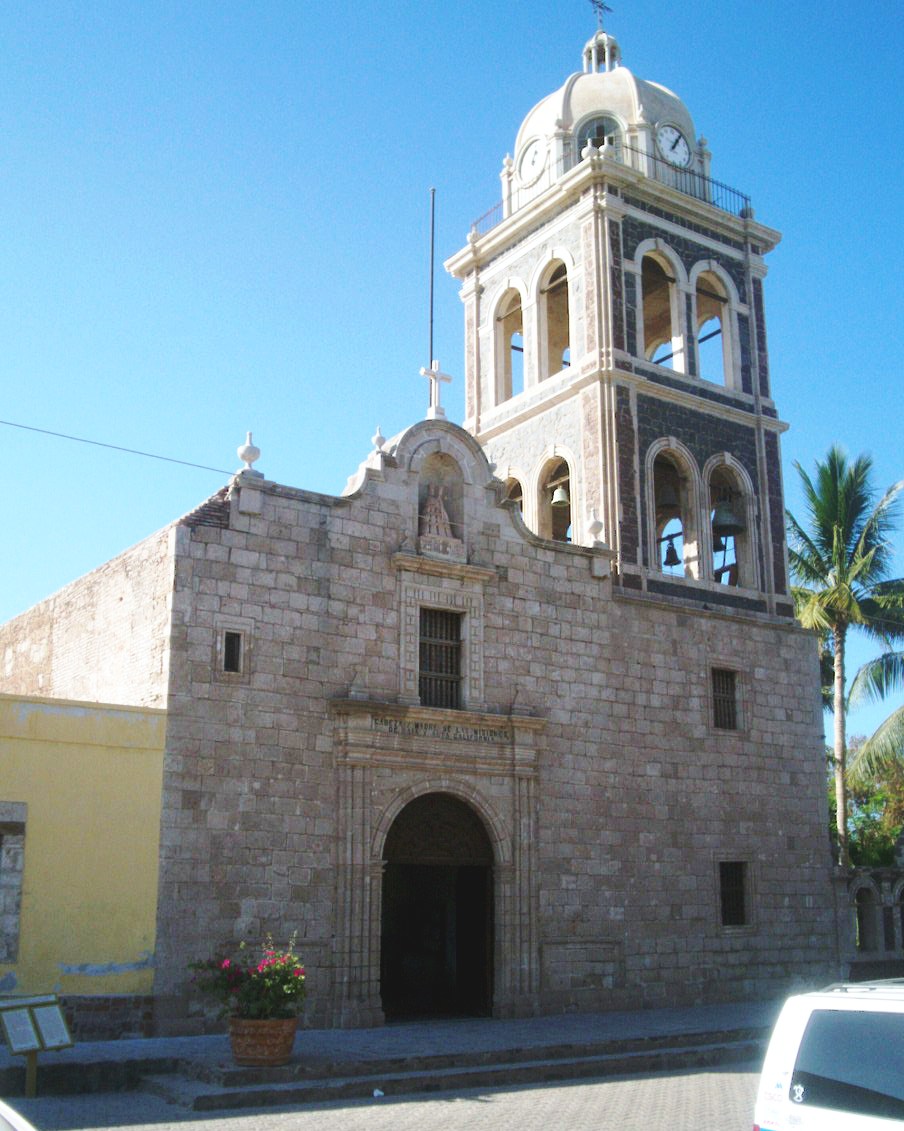|
Guazapares Municipality
Guazapares is one of the 67 municipalities of Chihuahua, in northern Mexico. The municipal seat lies at Témoris. The municipality covers an area of 2,145.8 km2. As of 2010, the municipality had a total population of 8,998, up from 8,010 as of 2005. The municipality had 492 localities, the largest of which (with 2010 populations in parentheses) was: Témoris (2,053), classified as rural. History As a pueblo, Guazapares was home to the Guazapare people,Also transcribed as Guacapane, Guacapare, Guarapare, Guasapare, Guasapari, Guaspare, Guazapari, or Gucapari a tribal group who spoke a dialect of the Tarahumara language. After Jesuit missionaries Julio Pascual and Manuel Martinez were killed in a 1632 uprising, led a punitive expedition against native groups including the Guazapare, killing about 800 natives. The surviving Guazapare were reduced into the Jesuit missions The phrase Jesuit missions usually refers to a Jesuit missionary enterprise in a particular a ... [...More Info...] [...Related Items...] OR: [Wikipedia] [Google] [Baidu] |
Municipalities Of Mexico
Municipalities ('' municipios'' in Spanish) are the second-level administrative divisions of Mexico, where the first-level administrative division is the ''state'' (Spanish: estado). They should not be confused with cities or towns that may share the same name as they are distinct entities and do not share geographical boundaries. As of January 2021, there are 2,454 municipalities in Mexico, excluding the 16 boroughs of Mexico City. Since the 2015 Intercensal Survey, two municipalities have been created in Campeche, three in Chiapas, three in Morelos, one in Quintana Roo and one in Baja California. The internal political organization and their responsibilities are outlined in the 115th article of the 1917 Constitution and detailed in the constitutions of the states to which they belong. are distinct from , a form of Mexican locality, and are divided into '' colonias'' (neighborhoods); some municipalities can be as large as full states, while cities can be measured in b ... [...More Info...] [...Related Items...] OR: [Wikipedia] [Google] [Baidu] |
Jesuit
The Society of Jesus ( la, Societas Iesu; abbreviation: SJ), also known as the Jesuits (; la, Iesuitæ), is a religious order (Catholic), religious order of clerics regular of pontifical right for men in the Catholic Church headquartered in Rome. It was founded in 1540 by Ignatius of Loyola and six companions, with the approval of Pope Paul III. The society is engaged in evangelization and apostolic ministry in 112 nations. Jesuits work in education, research, and cultural pursuits. Jesuits also give retreats, minister in hospitals and parishes, sponsor direct social and humanitarian ministries, and promote Ecumenism, ecumenical dialogue. The Society of Jesus is consecrated under the patron saint, patronage of Madonna della Strada, a title of the Blessed Virgin Mary, and it is led by a Superior General of the Society of Jesus, Superior General. The headquarters of the society, its Curia, General Curia, is in Rome. The historic curia of Ignatius is now part of the attached to t ... [...More Info...] [...Related Items...] OR: [Wikipedia] [Google] [Baidu] |
Hormigueros
Hormigueros (, ) is a town and municipality of Puerto Rico located in the western region of the island, northeast of Cabo Rojo; northwest of San Germán; and south of Mayagüez. Hormigueros is spread over 5 barrios and Hormigueros Pueblo (the downtown area and the administrative center). It is part of the Mayagüez Metropolitan Statistical Area. History The region of what is now Hormigueros belonged to the Guaynia region, located on the southwest portion of Puerto Rico. Archaeological findings have established that there were tribes already settled in the region around 820 BC. During the Spanish colonization at the beginning of the 16th century, European colonizers settled in the area. A coffin found underground the basilica was tested in laboratories and was dated prior to 1600. Historians also mention the ''Horomico River'' as one of the main sources of gold during the rush of the era. In 1692, the settlement that would become the town of Hormigueros was first establish ... [...More Info...] [...Related Items...] OR: [Wikipedia] [Google] [Baidu] |
Santa Matilde (Chihuahua)
The Santa Matilde, or SM4.1, is a sports car designed and produced in Brazil by Companhia Industrial Santa Matildeauto katalog, modelljahr 1991, page 85 between 1977 and 1997. Conception Equipped with tuned versions of the Chevrolet Opala engine, the first prototype was revealed at the 1976 Salão do Automóvel de São Paulo as one of the most expensive and luxurious cars in the country at the time. It featured items like retractable bumpers, power windows, hidden radio antenna, cassette player, retractable seat belts, leather seats with fine adjustment and air conditioning. The project was run by engineer Humberto Pimentel Duarte and former pilot and race-car tuner Renato Peixoto. The body design came from Humberto's daughter Ana Lídia and was not based on any previous car, although a few details were inspired by many car models. Characteristics The Santa Matilde has a fiberglass body reinforced with polyester. It is a 2+2 coupe, but the rear seats are completely useles ... [...More Info...] [...Related Items...] OR: [Wikipedia] [Google] [Baidu] |
Spanish Missions In The Sonoran Desert
The Spanish missions in the Sonoran Desert ( es, Misiones jesuíticas en el desierto de Sonora) are a series of Jesuit Catholic religious outposts established by the Spanish Catholic Jesuits and other orders for religious conversions of the Pima and Tohono O'odham indigenous peoples residing in the Sonoran Desert. An added goal was giving Spain a colonial presence in their frontier territory of the Sonora y Sinaloa Province in the Viceroyalty of New Spain, and relocating by Indian Reductions (''Reducciones de Indios'') settlements and encomiendas for agricultural, ranching, and mining labor. Geography and history The missions are in an area of the Sonoran Desert, then called " Pimería Alta de Sonora y Sinaloa" (Upper Pima of Sonora and Sinaloa), now divided between the Mexican state of Sonora and the U.S. state of Arizona. Jesuits in missions in Northwestern Mexico wrote reports that throw light on the indigenous peoples they evangelized. A 1601 report, ''Relación de la ... [...More Info...] [...Related Items...] OR: [Wikipedia] [Google] [Baidu] |
Reductions
Reductions ( es, reducciones, also called ; , pl. ) were settlements created by Spanish rulers and Roman Catholic missionaries in Spanish America and the Spanish East Indies (the Philippines). In Portuguese-speaking Latin America, such reductions were also called ''aldeias''. The Spanish and Portuguese relocated, forcibly in many cases, indigenous inhabitants (''Indians'' or ''Indios'') of their colonies into urban settlements modeled on those in Spain and Portugal. The word "reduction" can be understood wrongly as meaning "to reduce." Rather, the 1611 Spanish dictionary by Sebastián de Covarrubias defines ''reducción'' (reduction) as "to convince, persuade, or to order." The goals of reductions were to concentrate indigenous people into settled communities and to convert the Indians to Christianity and impose European culture. The concentration of the indigenous into towns facilitated the organization and exploitation of their labor. Reductions could be either religi ... [...More Info...] [...Related Items...] OR: [Wikipedia] [Google] [Baidu] |
Manuel Martinez (Jesuit)
{{hndis, Martinez, Manuel ...
Manuel Martínez may refer to: * Manuel Martínez Gutiérrez (born 1974), Spanish track and field athlete * Manuel Martínez Canales (1928–2014), Spanish footballer * Manuel Martínez Iñiguez (born 1972), Mexican footballer * Manuel Martínez Lara (born 1980), Spanish footballer * Manuel Martínez (fencer) (born 1939), Spanish Olympic fencer * Manuel Alonso Martínez (1827–1891), Spanish jurist and politician * Manuel Luis Martinez (born 1966), American novelist and literary critic * Manuel Martínez (politician), 1919-1922 Secretary of State of New Mexico See also * Manny Martinez (other) Manny Martinez may refer to: *Manny Martínez (musician), drummer, formerly for The Misfits *Manny Martínez (baseball) Manuel Martínez DeJesús (born October 3, 1970) is a Dominican Minor League Baseball manager and former professional baseb ... [...More Info...] [...Related Items...] OR: [Wikipedia] [Google] [Baidu] |
Julio Pascual
Julio is the Spanish equivalent of the month July and may refer to: *Julio (given name) *Julio (surname) *Júlio de Castilhos, a municipality of the western part of the state of Rio Grande do Sul, Brazil * Julio (album), ''Julio'' (album), a 1983 compilation album by Julio Iglesias *Julio, a character in ''Romiette and Julio'' by Sharon M. Draper Other *Don Julio, a brand of tequila produced in Mexico * Hurricane Julio, a list of storms named Julio * Jules * ''Julie-O'', musical work for solo cello by Mark Summer *Julio 204 or JULIO 204, one of the first graffiti writers in New York City *Julio-Claudian dynasty, the first five Roman Emperors: Augustus, Tiberius, Caligula (also known as Gaius), Claudius, and Nero * Julius (other) {{disambiguation ... [...More Info...] [...Related Items...] OR: [Wikipedia] [Google] [Baidu] |
Tarahumara Language
The Tarahumara language (native name ''Rarámuri/Ralámuli ra'ícha'' "people language") is a Mexican indigenous language of the Uto-Aztecan language family spoken by around 70,000 Tarahumara (Rarámuri/Ralámuli) people in the state of Chihuahua, according to an estimate by the government of Mexico. Genetic affiliation Tarahumara was previously considered to belong to the Taracahitic group of the Uto-Aztecan languages, but this grouping is no longer considered valid. It is now grouped in a Tarahumaran group along with its closest linguistic relative, the Guarijío language (Varihio, Huarijío), which is also spoken in the Sierra Madre Occidental. Dialectology Rarámuri is spoken by 70,000 or more indigenous Mexicans living in the state of Chihuahua. There is no consensus among specialists on the number of dialects: competing proposals include two (Western and Eastern); four (Western, Northern, Southern, Eastern); and five, according to field surveys conducted in the 1990s ... [...More Info...] [...Related Items...] OR: [Wikipedia] [Google] [Baidu] |
Administrative Divisions Of Mexico
The United Mexican States ( es, Estados Unidos Mexicanos) is a federal republic composed of 32 federal entities: 31 states and Mexico City, an autonomous entity. According to the Constitution of 1917, the states of the federation are free and sovereign in all matters concerning their internal affairs. Each state has its own congress and constitution. Federal entities of Mexico States Roles and powers of the states The states of the Mexican Federation are free, sovereign, autonomous and independent of each other. They are free to govern themselves according to their own laws; each state has a constitution that cannot contradict the federal constitution, which covers issues of national competence. The states cannot make alliances with other states or any independent nation without the consent of the whole federation, except those related to defense and security arrangements necessary to keep the border states secure in the event of an invasion. The political organiza ... [...More Info...] [...Related Items...] OR: [Wikipedia] [Google] [Baidu] |
Secretaría De Desarrollo Social
The Secretariat of Welfare ( Spanish: ''Secretaría de Bienestar'') is the government department in charge of social development efforts in Mexico. The Secretary of Welfare is a member of the Executive Cabinet, and is appointed at the discretion of the President of the Republic. The Secretariat of Welfare aims to eliminate poverty through comprehensive, collectively responsible human development, achieve adequate levels of well-being with adjustment to government policies, and improvement through social, economic and political factors in rural and urban areas to enhance local organization, city development and housing. Between 1992 and 2018, the agency was known as the Secretariat of Social Development (''Secretaría de Desarrollo Social''), or SEDESOL. History The agency was established as the Secretariat of Public Works (''Secretaría de Obras Públicas'') in 1959. In 1976, it changed its name to the Secretariat of Human Settlements and Public Works (''Secretaría de Asentam ... [...More Info...] [...Related Items...] OR: [Wikipedia] [Google] [Baidu] |



